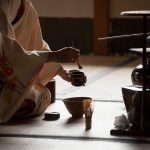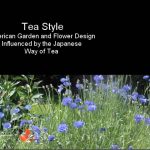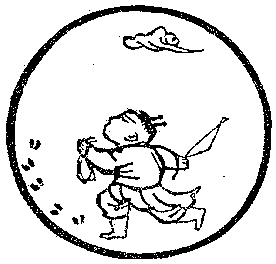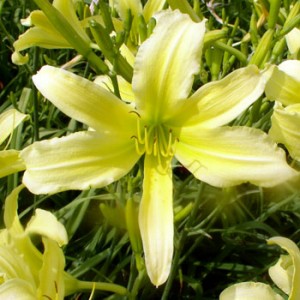 Oh joy, oh rapture
Oh joy, oh rapture
This is the name of a lily I planted a couple of years ago. I thought the name was kind of arbitrary and wonderfully poetic. I didn’t get it until tonight in late July when I walked out into the night, my garden illuminated only by the full moon. I was overwhelmed with the perfume from these flowers which did give rise to joy and rapture or gratitude – no kidding. I had no idea…
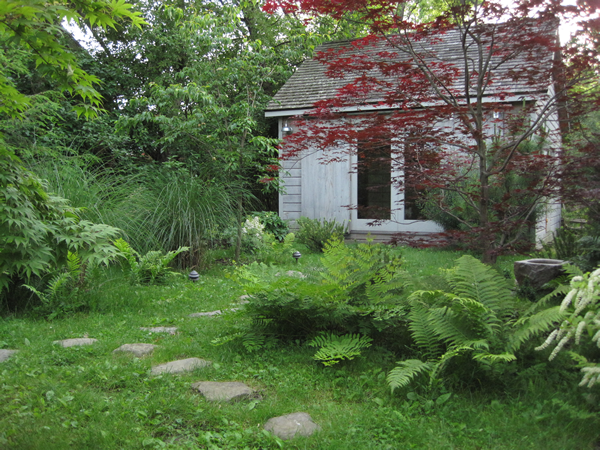
I first learned to garden when I lived at Green Gulch Zen Center in California. Green Gulch is a working organic farm that grows vegetables and flowers for market. I learned about Biodynamic farming, watched gardeners plant seeds in rows of dark rich earth, walked by steaming hot compost piles and weeded in the flower gardens.
Zen is known for its close relationship with the arts, in particular gardening, poetry, calligraphy and the tea ceremony. As part of my Zen practice I have been studying the Way of Tea for many years. This study includes flower arranging, garden design, architecture, literature, the connoisseurship of the fine and applied arts and cuisine. Kaiseki cuisine is a seven course meal served during a tea gathering and in 1997 I wrote a book about it called The World in a Bowl of Tea.
When I moved to my home in Tivoli, New York I continued my Tea and Zen practice and built a small tea house in my back yard. One important element in any Tea gathering is the garden and the path to the tea house, called a Roji. To learn more about this I went to Japan to study Japanese garden design at Kyoto University of Art and Design.
It was my first trip to Japan and I felt completely at home. At last I could walk through the gardens I had heard so much about. I wandered through ancient temples and drank in the atmosphere of the timeless spaces.
This is the story of how I built a Tea house in my backyard and how I created the gardens that surround it. I incorporate many of the ideas of the wild garden, the English cottage garden, the prairie garden all the while working within the rustic, elegant style of the Tea Ceremony.
excerpt – A Tea Garden in Tivoli

This bench is designed by the English architect Edwin Lutyens who was a colleague of the famous garden designer Gertrude Jekyll. They created the English County Garden style in the late 1800″s. The bench fits well with my farm house from the same era and shows that one can have elements in a tea garden that are not strictly Japanese.
There are two important structures or elements that define a
Tea garden. One is the waiting bench, the other is the arrangement of stones around a water basin, called a Tsukubai.
The guests follow a path to the bench. The host will come out of the tea house, and greet them by pouring fresh water into the basin. He then bows to the guests at the gate and returns to the tea room. The guests, one by one, will go to the water basin, rinse their hands and mouth and proceed into the tea room.
In Japan, the waiting bench is usually a covered structure but here in Tivoli I have chosen a bench that reflects the architecture of my house and gives the garden a natural feel rather than a strictly Japanese design.
Tea as an art form follows rules, but is also flexible and creative. I can design the elements of the garden such as the bench, water basin, fences, gates and paths to my own taste yet follow the fundamental principles.
The most important aspect of any tea garden is to create an experience of contemplation and harmony.
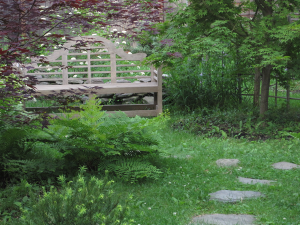
excerpt from A Tea Garden in Tivoli







